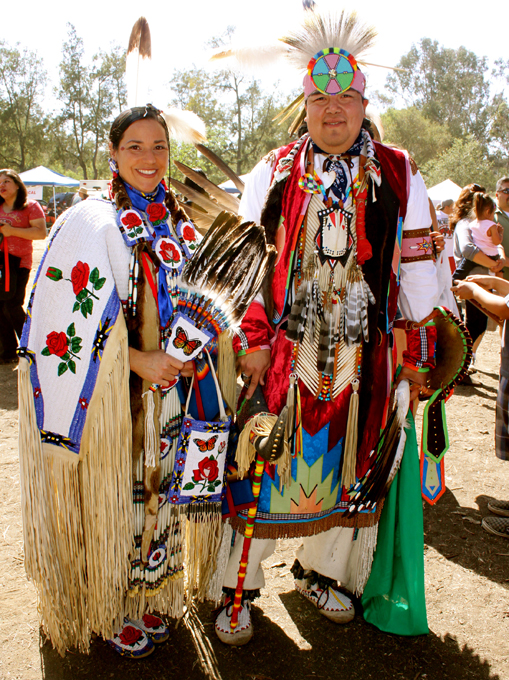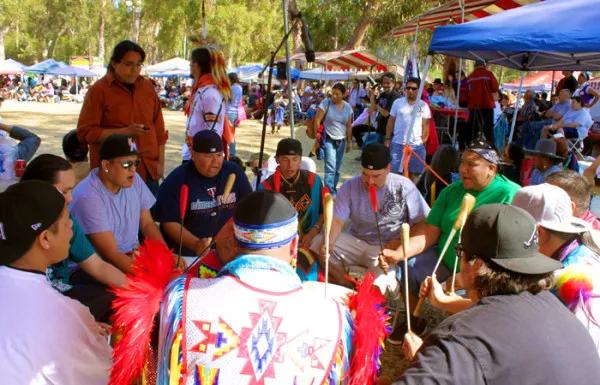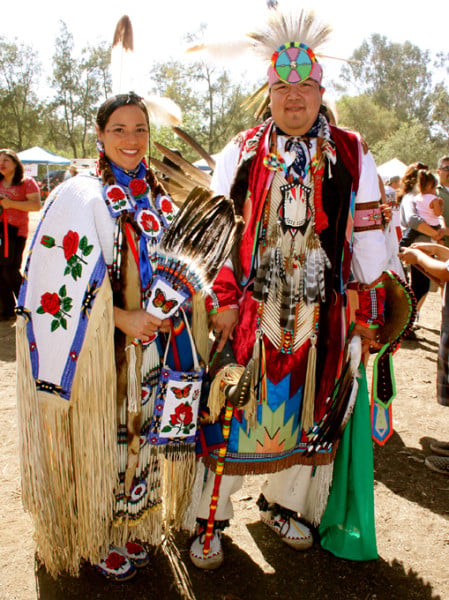
A couple dressed in Northern traditional dress for Stanford’s 41st annual Powwow, which was held for three days last weekend from May 11 to 13.
The word powwow translates to “spiritual leader” in Narragansett, the language of the Narragansett tribe. Modern-day powwows generally involve both Native Americans and non-Native Americans gathering together in celebration of Native American culture.
According to Layton Lamsam ’14, co-chair of Stanford Powwow, the event is one of “the top two or three major ones in the country and definitely the largest in the Bay Area.”
“I am originally from Oklahoma, and I know people that come out here just for this event,” he said. “When people hear ‘Stanford Powwow,’ they know it. It has name recognition.”
A group of men huddled in a circle to sing a traditional song and play the drums, while visitors look on and enjoy the performance.
While there is no official attendee count, Lamsam estimated the cumulative total amount of visitors over three days to be roughly 30,000 people.
He pointed out that the addition of four bleachers to the two available bleachers last year, as well as an increase in handicapped and elderly seating, attracted a larger crowd this year.
“More people came this year because of better public access,” he said. “Hopefully next year we will have more bleachers and make this event even larger.”
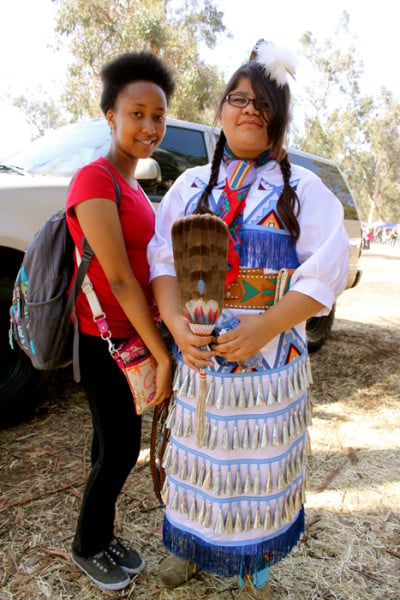
Marti Hardbarger ’15 (right), wearing a traditional Jingle costume, brought some friends along with her to the Powwow, including Elizabeth Sigalla ’15 (left), a freshman from Tanzania and first-time Powwow attendee.
“It was a great bonding experience for me, especially with getting to know the Native community better,” Hardbarger said. “Also, a lot of my friends had no idea what a powwow was, so I was teaching them things, and they learned a lot.”
“My first Powwow experience was pretty amazing” Sigalla said. “I loved the dances, traditional jewelry and the costumes.”
“Once I got them to try the frybread, there was no turning back,” Hardbarger joked.
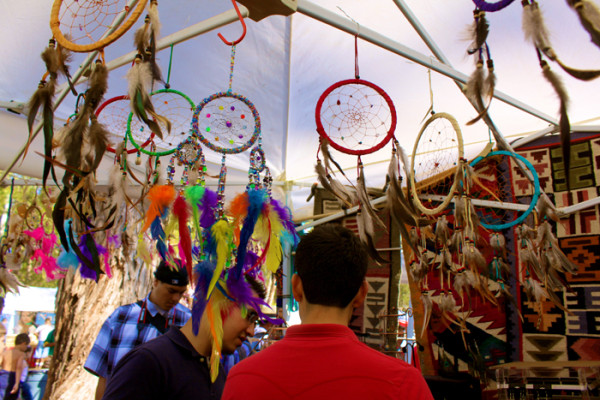
Visitors look at traditional Native American artifacts such as colorful dream catchers hanging above them. According to Native American folklore, dream catchers, when hung over a sleeping area, trap and prevent nightmares.
“I loved the feathers, beads and colorful fabrics [in the stores]. They really appealed to me,” Sigalla said.
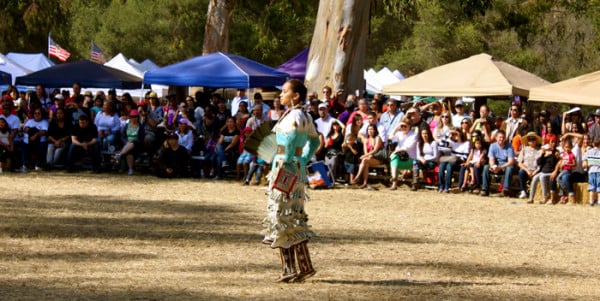
A dancer participated in the second round of the women’s dance competition.
Besides competitive dancing, the arena featured public dancing, instrument shows, vocal performances and exhibitions. The event also included a five-kilometer “Fun Run.”
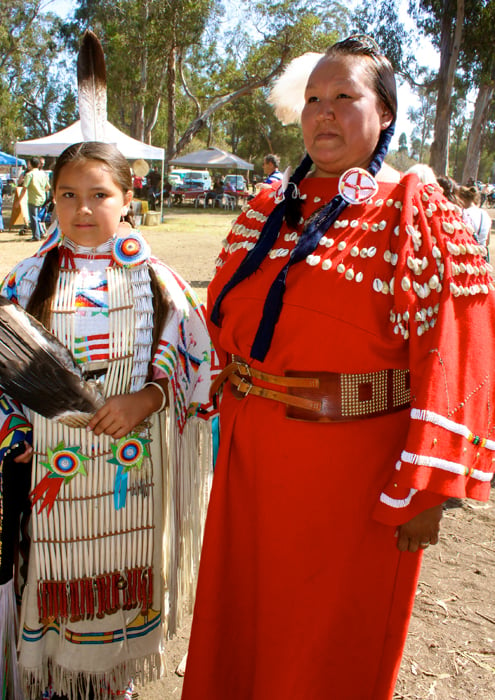
A mother and daughter dressed in Northern traditional clothing for the festivities.
“People make it a yearly event, so it has become a fixture for families,” Lamsam said.
Reflecting on this year’s Powwow, he said, “I think it went really well, and we pulled it off. Our goal is always to tweak and improve the event every year. We want it to be a family-friendly social gathering where the public can be educated and also have fun.”
Approximately 80 students, most of them of Native American origin, serve on the Stanford Powwow committee. Stanford Powwow is one of many Stanford Native American Cultural Center’s activities. Lamsan noted that the group receives a range of volunteer offers from non-Stanford affiliates from around the country.
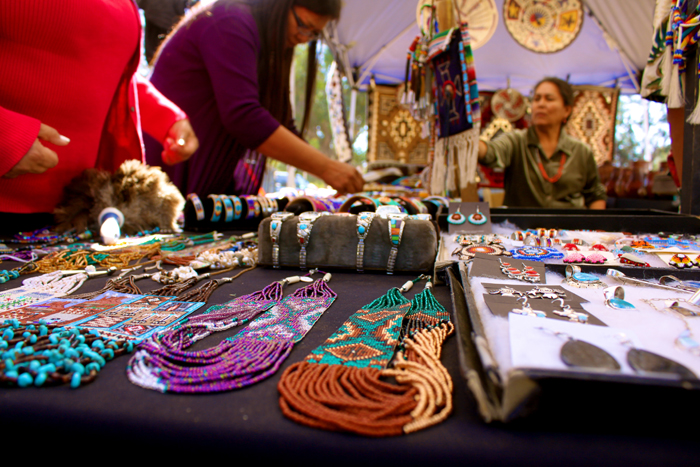
Prospective buyers examined handmade jewelry at one of dozens of booths selling various goods from pottery to feathers.
The booth’s seller, Alex Hing, has attended Stanford Powwow for the past eight years.
“Stanford students and potential consumers were friendly and outgoing,” he said. “We did fairly okay in sales — with the recession people can’t spend a lot.”
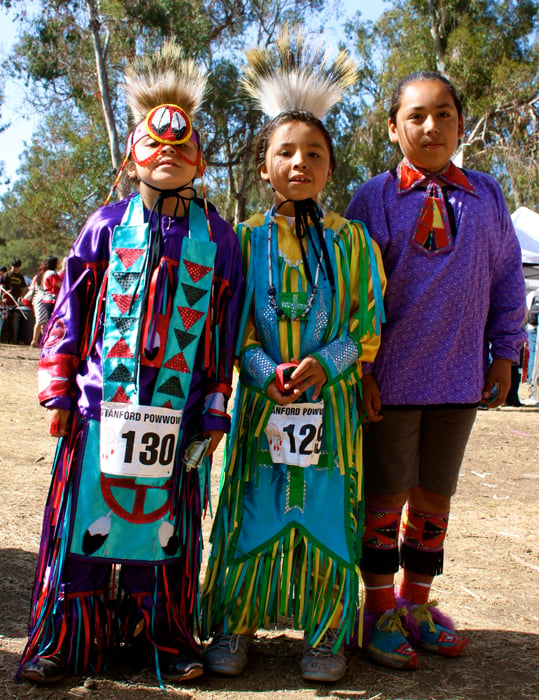
The Powwow was filled with young children. A group of three children, calling themselves “The Youth Dancers of the Southwest,” sold traditional jewelry to raise money for Powwow travel and dancing costs.
— Natasha Weaser
